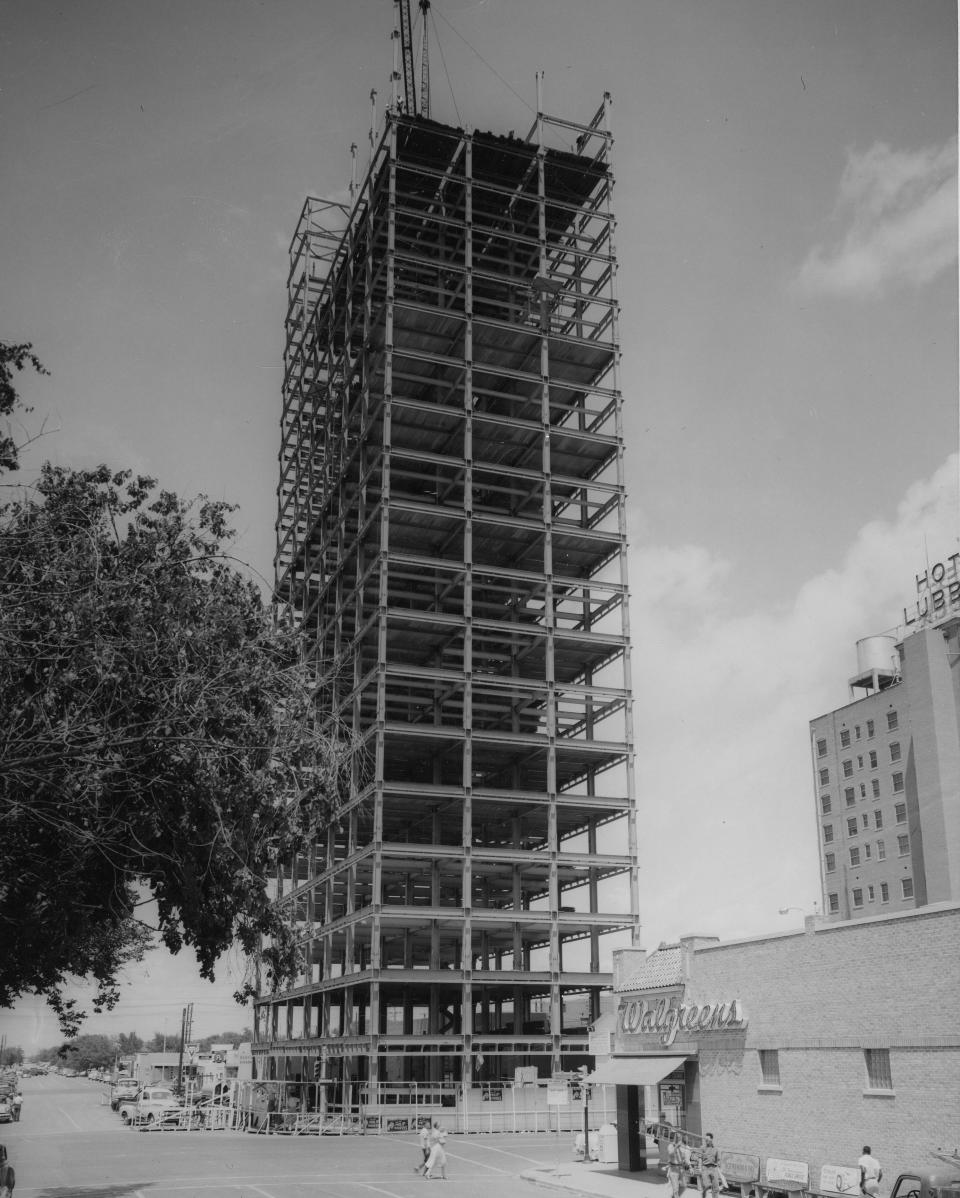Editor's Note: Jack Becker is the editor of Caprock Chronicles and librarian emeritus at Texas Tech University. He can be reached at [email protected]. Today's article on the Great Plains Life Building is the first of a two-part series by Chuck Lanehart, Lubbock attorney and award-winning Western history writer.


Mother Nature boldly tried to raze the only elevated spot in a famously flat community, but nearly 55 years later, Lubbock's tallest building still stands. Some believe the place is twisted, haunted or otherwise undesirable, an emblem of a declining downtown. Others see the tower as a symbol of the city center's recovery. What is the true story of the Great Plains Life/Metro Tower/NTS Tower/Metro Tower Lofts Building?
Between 1940 and 1950, Lubbock was the second fastest growing city in the United States (after Albuquerque), so to meet expected commercial demand, a skyscraper was in order.
In 1952, construction began on a $2.5 million, towering, 20-story office building at the northeast corner of Broadway and Avenue L. The space was formerly occupied by the old residence of Lubbock's pioneer Wheelock family.
The developer, Realty Equities Corp. of New York, hired noted Abilene architect David S. Castle, who designed the building in the mid-twentieth century International Style. Hailed as the tallest building between Fort Worth and Denver, it would rise 274 feet, dwarfing all other buildings in Lubbock.
According to a 1953 newspaper article, the Lubbock skyscraper now under construction would be the best spot in the city when completed, in case a tornado struck. Such buildings are more difficult to demolish. Tornadoes that hit other cities. . . have proven that multi-story, steel-reinforced buildings can weather the storm.”


The article continued, “When the building is completed, along with a new $1,000,000+ store for Dunlap's across the street. . . and completion
the new First Methodist Church will have given the downtown Lubbock business district a new 'glamour' look beyond the wildest dreams of just a few years ago.”
The top floor opened in 1955 and was topped with large neon signs reading “Great Plains Life,” a local insurance company that occupied several floors of the building. Unfortunately, the signs were not visible in Lamesa, 60 miles south, as promoters had hoped. Smaller signs on the first floor noted the venerable First National Bank of Lubbock, which now called the place home.
Among other businesses leasing space in the building's 110,000 square feet were law firms, architects, government offices, doctors and dentists. The Top of the Plains restaurant shared the 20th floor with radio station KLLL, where young disc jockey Waylon Jennings played records and hung out with his friend Buddy Holly.
The Lubbock Avalanche-Journal published advertisements soliciting tenants almost daily, touting the building as “fully air-conditioned,” with “excellent concierge services and soundproof ceilings” and “very reasonable” rents. But by 1970, First National Bank, major law firms, and even the Great Plains Life Insurance Company had moved. Only 50 percent of the building was occupied.
When the historic twister hit downtown Lubbock on the night of May 11, 1970, it was a monster with winds of more than 200 miles per hour, and the Great Plains Life Building stood in its deadly path. The tornado was one of the largest and most destructive ever. Twenty-six people were killed, hundreds were injured, and property damage was estimated at $840 million ($6.7 billion in 2024 dollars).


The Great Plains Life Building – just six blocks from the tornado's main path – took a hit in the southwest corner as the storm moved southwest to the north-northeast path. The wind speed near the top of the building reached 350 km/h. Residents who escaped the structure during the storm reported that it moved “like a ship rolling in the sea.”
Aerial photographs taken shortly after the disaster show the building standing majestically amid the extensive destruction in the area. Everyone was afraid that the twenty-story monolith would soon fall. Windows were broken, rocks were blown away and there were reports of structure damage
waving. A civil defense truck drove through nearby streets warning, “Go back, the Great Plains Building is falling!”


Within days, engineers examined all twenty floors and were satisfied that the tower was structurally stable and would not topple. Attorney Clancey Brazill, who was in the building when the tornado struck, said, “I give you the guarantee of Oklahoma that if that building doesn't fall by Monday night, it will never fall.”
Nevertheless, local residents feared that the psychological effect of the twister's impact on the building would hamper future operations there. They were right, and for years the vacant building was home to nothing but pigeons and vandals.
Part two of this series will be published this Sunday in the Lubbock Avalanche-Journal.


This article originally appeared in Lubbock Avalanche-Journal: Caprock Chronicles Great Plains Life Building and 1970 Lubbock tornado

